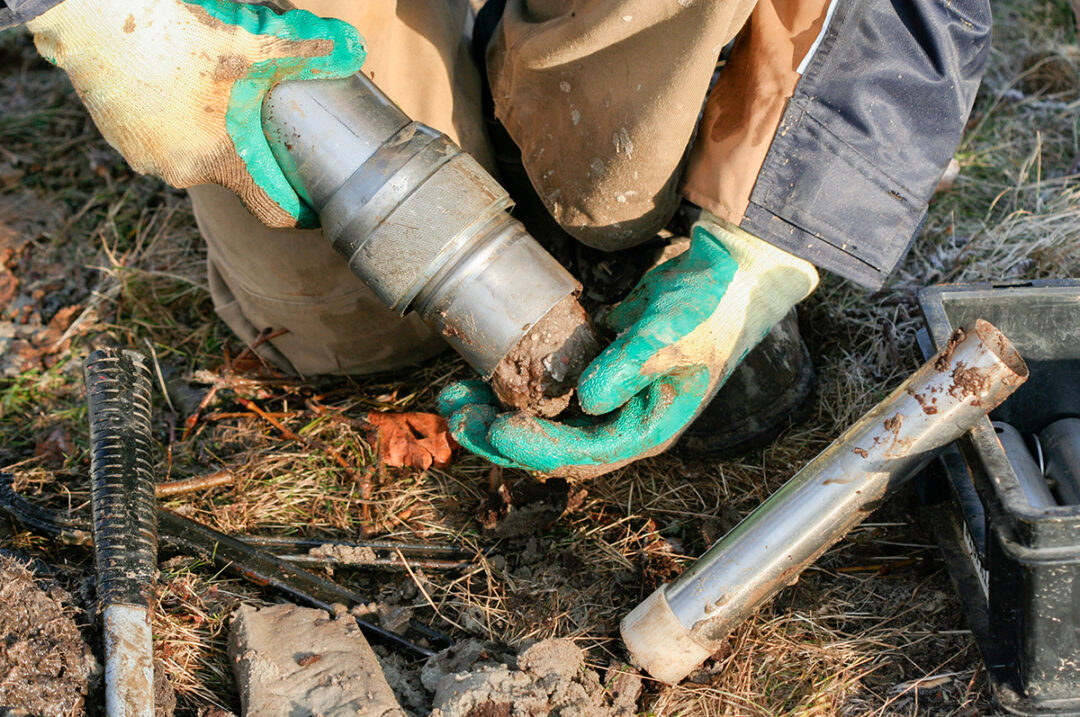It was a cold evening in early November on a desolate Midwestern backroad. Growers were just getting back into the fields after storms tore through the acreage. As the combine trudged along, the farmer caught a glimpse of something strange up ahead. The shadowy figure became more and more apparent as his machine crept closer. Soon he was upon it, and he couldn’t look away. It could only be one thing: yield loss. While it may not be as thrilling as a mystery, yield loss is still murdering profits. But similar to the true crime dramas we all know and love, deoxyribonucleic acid (DNA) is going to help solve this case.
There is a new testing method in town. It is far different than any other form of agronomic testing taking place over the last century. Instead of looking at a soil's chemical properties, we catch a glimpse into the soil's DNA. This isn’t reviewing the sand, silt and clay particles in the soil and knowing they came from the Canadian Arctic about 100,000 years ago. This is a look at the DNA of all the tiny little things calling this sand, silt and clay home.
Met-a-gen-omics
These insights are garnered through a new process of DNA sequencing technology called metagenomics. Soil is a living breathing thing comprised of thousands or more different constituents. Metagenomics seeks to identify each of these constituents, based on their DNA. Trace Genomics, an industry pioneer, describes the metagenomics DNA sequencing process as something like dumping tens of thousands of puzzles together and sorting through all the puzzle pieces. The metagenomics process then identifies each puzzle piece, sorts them out and places each piece into the proper puzzle. At the current time, researchers have identified both pathogenic and beneficial organisms in the soil. They estimate an average soil has about 11,000 identifiable pieces of DNA.
When soil genomic testing first gained prominence just a few short years ago, most labs came to market with just a handful of identified pathogens. At the current time, there are about 225 pathogens that have been identified in over 70 crops. One lab added 50 additional pathogens in 2023 alone. Some of the first identified pathogens were corn rootworm beetles, soybean cyst nematode (SCN) and soybean sudden death syndrome (SDS). Following up the first flush of yield robbers are the in-season diseases like anthracnose and gibberella stalk rot, as well as seedling diseases like fusarium, pythium and rhizoctonia.
Identifying the good guys
In addition to the identification of potential yield-robbing suspects, DNA sequencing can also help pinpoint allies to crop growth. Beneficial organisms that lead to increased soil health can be singled out through DNA testing. General soil health testing estimates a soil's respiration. A soil sample is collected, dried and rewetted to measure how much that soil respires, or breathes. This has been done for most of this century, but DNA sequencing takes this analysis to another level. Laboratories can now analyze soil and determine exactly which soil bacteria are present. This could help land managers improve soil health by targeting certain healthy soil bacteria that are lacking or out of balance.
Yet another emerging area of soil DNA science is the identification of soil biology that affects nitrogen and phosphorus cycling. As most of us know, nitrogen and phosphorus are contaminants in ground and surface water. By gaining knowledge about nutrient cycling, however, growers and agronomists can begin changing management practices to help limit this nutrient loss.
Move DNA mountains
Identifying the yield-robbing suspects is just the first step. A grower needs to work with their team to nab these bandits. There are multiple ways to stop these yield robbers in their tracks. One of the simplest is through crop rotation. A grower can rotate away from a susceptible crop and therefore avoid the yield loss associated with the identified pathogen. A great example would be a field that has a high presence of corn rootworm beetles. It would be best to rotate away from corn and starve out the corn rootworm beetles. Another easy management strategy is seed selection and seeding rate. If a field is identified to have a high presence of white mold, a hybrid with a high disease tolerance rating can be selected. Reduced planting populations are also known to limit the risk of white mold infection. Through careful planning plus the knowledge gained from genetic testing, growers can stop the crime before it even starts.
Managing pathogens is best done out of season, but it is certainly not the only choice. Working our way through the management options leads us toward seed treatments. In the presence of a disease like pythium or phytophthora, there are multiple seed treatment options available to help keep these alfalfa diseases at bay. Seed treatment can be applied before planting to control soil-borne disease and lead to better stand establishment.
If the pathogen persists and rears its ugly head, in-season treatment options also exist. While they generally do not eliminate the pest, they do help deal with some of the damage. A prime example is corn rootworm beetles at silking in corn. The beetles will clip silks, leading to pollination issues. An application of insecticide may be warranted to control the amount of egg-laying beetles and reduce silk clipping. By reducing the number of beetles in the current year, the number of beetles hatched the following year can be reduced.
These are just a few examples of what is possible with additional insight into the pathogen load in soil. With the myriad of unexplored DNA in soil, the possibilities are endless and ever-expanding. Solving a mystery is never easy. But the "whodunit" case of yield loss may have just become a little easier with some help from DNA.











